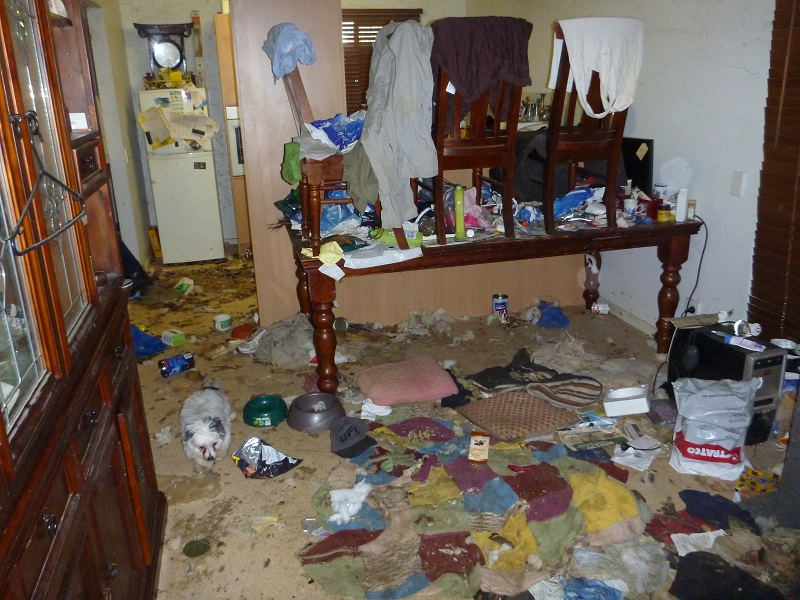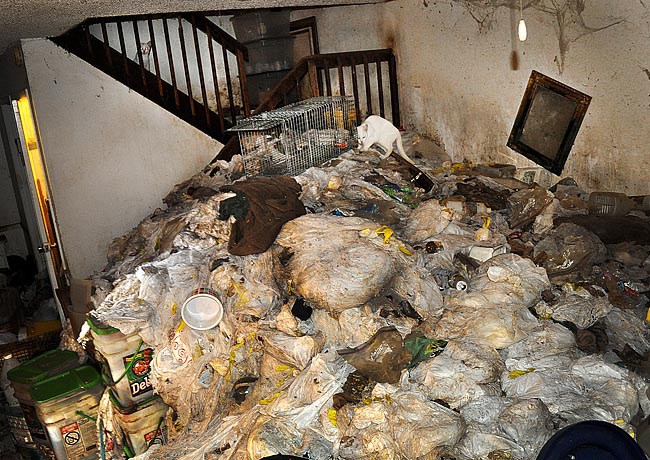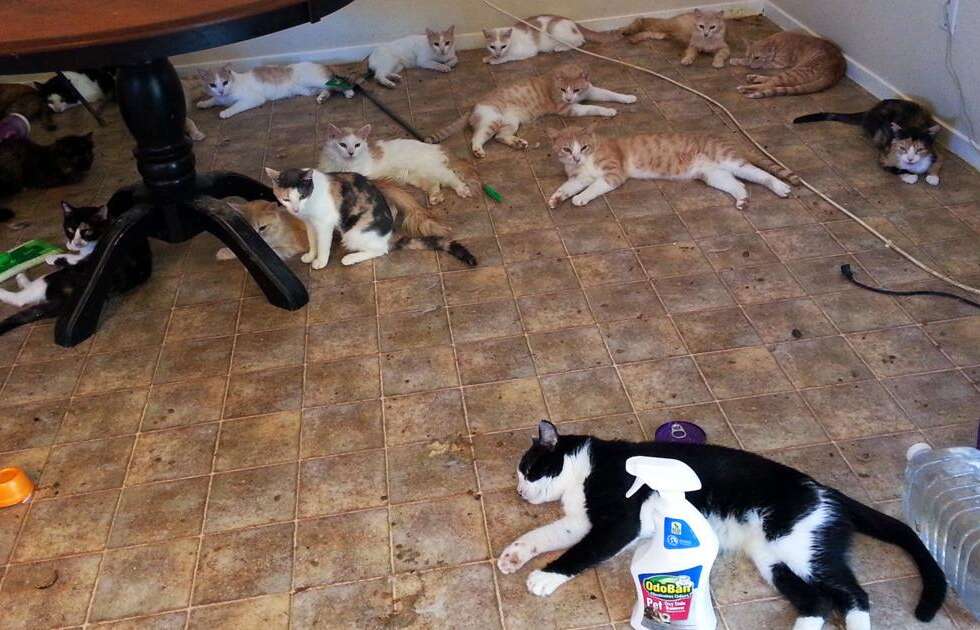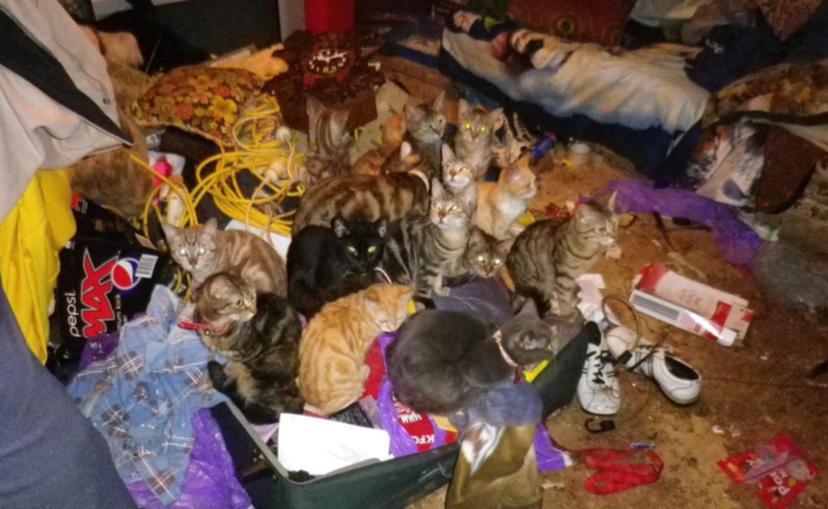What is Animal Hoarding or Pet Hoarding Disorder?
Hoarding disorder is defined as an ongoing difficulty of throwing away or parting with possessions because of the belief that they need to be saved or kept. People who suffer from hoarding disorder usually experience distress at the thought of getting rid of the items. Animal hoarding is no different. Instead of hoarding inanimate objects, animal hoarders tend to keep a higher-than-usual number of animals or pets without having the ability to properly house or care for them. For example, an animal hoarder could be keeping dozens or hundreds of cats and kittens in a cramped house or basement. Although cat hoarding and dog hoarding are common among pet hoarders, any animal can fall into the category – including lizards, mice, fish, and any other animals.
Causes of animal or pet hoarding disorder can vary, but they are often associated with other mental health disorders such as attachment disorder, compulsive behaviours, and psychological issues. In the Canadian Veterinary Journal, some researchers suggest that animal hoarding can be better understood using an addictions-based model, as these individuals share many characteristics with substance abusers, including: a preoccupation with animals, denial of a problem, excuses for their behavior, claims of persecution, and neglect of personal and environmental conditions (Reinisch, 2008). Hoarding animals can be compared to addictive behaviour such as gambling and compulsive shopping, in which impulse control is impaired. The hoarders feel a need to get more animals even though they may recognize that it will cause financial, emotional, and physical stress; they are simply unable to control themselves.

What are the Implications of Animal or Pet Hoarding?
Animal hoarding can lead to overcrowding, unsanitary conditions, and health hazards for both the humans and the animals that they keep.
The risks associated with animal or pet hoarding can be broken down into physical and psychological health risks:
Physical Health Risks
- Transmission of Zoonotic Diseases: Zoonotic diseases are diseases that can be passed from animals to humans. The most recent COVID-19 pandemic is a good example of zoonotic disease. In the scenario of animal hoarding, this transmission is made possible through overcrowding and unsanitary living conditions which stem from feces and urine accumulation. These living conditions are conducive to the growth of harmful bacteria and parasites, which can then be passed on to humans.
- Respiratory Issues: Air quality is degraded when there is a buildup of animal hair, dander, feces, and urine. This can trigger allergies and asthma in humans. Ammonia from urine can also cause breathing difficulties due to irritation in the lungs. Over time, the condition can become chronic and would need further medical intervention.
- Falls, Wounds, and Injuries: Animal behaviourists have observed that in overcrowded and stressful conditions, animals tend to bite or scratch themselves and/or others. This can lead to open wounds that can become infected, as well as falls and injuries.
- Insect and Rodent Infestations: Animal hoarding often attracts insects and rodents. The most common insects are fleas and cockroaches, which thrive in dirty conditions. These insects, as well as rodents, can carry diseases and contribute to the spread of pathogens.
Psychological Health Risks
- Compulsive Hoarding Disorder: Animal or pet hoarding disorder can be a manifestation of a broader hoarding disorder. This requires professional medical intervention. Professionals can help find and address the underlying issues, and assist with mitigating the symptoms and disorder in a holistic manner.
- Anxiety and Stress: People who live in overcrowded, cluttered, and unsanitary conditions tend to have elevated levels of anxiety and stress. For those with existing anxiety-related disorders, these conditions can further exacerbate the symptoms. They might be constantly concerned for the welfare of the animals, afraid of the legal repercussions, and/or live in social isolation.
- Depression: In addition to anxiety and stress, depression is a common health risk among animal hoarders. Coupled with social isolation due to the fear of potential conflicts with family members, friends, and authorities, living in a hoarding situation can lead to depression. In turn, this can strain relationships with others such as neighbours and family members, and lead to legal and financial repercussions.

Where Can You Get Animal Hoarding Help?
In Toronto, Ontario, there are a number of primary agencies that can help inspect properties and determine if they are uninhabitable due to animal hoarding:
Toronto Public Health (TPH)
Toronto Public Health’s mandate is to protect public health in Toronto. They can be contacted to come and inspect homes to ensure they meet health and safety standards. They have the authority to issue orders to clean up a property that is deemed to be a health hazard due to the accumulation of animal waste or uninhabitable living conditions.
City of Toronto’s Municipal Licensing & Standards (MLS)
The MLS division of the City of Toronto enforces by-laws related to property standards, including maintenance, occupancy standards, and the physical condition of properties and buildings. If a property is found to violate these standards due to animal hoarding, MLS can issue orders to comply, which may include cleaning up the property and taking measures to make it habitable again.
Provincial Animal Welfare Services (PAWS)
PAWS’s primary focus is animal welfare, and they can be involved in cases of animal hoarding where the animals’ well-being is at risk. PAWS may not directly declare a property to be uninhabitable, but their inspection findings can trigger involvement from other agencies, such as the Toronto Public Health or the City’s Municipal Licensing & Standards, which have the authority to declare uninhabitable properties and enforce compliance for clean-up efforts.
Toronto Police and Fire Services
If there is immediate danger to the inhabitants or the public, local police can be involved. For example, animal hoarding can create fire hazards by blocking exits and creating structural risks. Toronto Fire Services can issue orders related to fire code violations. Police intervention can also be involved if there is suspicion of neglect or other offenses, and help involve other agencies as needed.

What to Do if You Suspect Animal Hoarding
If you’re in Toronto and concerned about a property that may be uninhabitable due to animal hoarding, the first step is to contact Toronto Public Health or the Municipal Licensing & Standards division for an inspection. They can advise on the appropriate actions to take and which agency would be most appropriate to handle the situation.
For anywhere else in Ontario, contact the provincial animal welfare services to report the situation. This not only helps in the potential rescue of animals in distress, but also in providing the necessary support and intervention for the individuals involved.
If you or someone you know needs compassionate and discreet animal hoarding cleaning services, contact Trax Extreme Cleaning at 905-882-3141.


